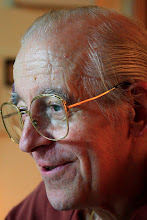 Si puo’ facilmente supporre come mai la stessa malattia avesse tanti nomi diversi. Ognuno voleva gettare la responsabilita’ del dilagare della terribile malattia al paese nemico. Se il Fracastoro non avesse coniato il nuovo nome, sifilide, i paesi europei probabilmente la chiamerebbero ancora con quello vecchio andando in bestia gli uni verso gli altri.
Si puo’ facilmente supporre come mai la stessa malattia avesse tanti nomi diversi. Ognuno voleva gettare la responsabilita’ del dilagare della terribile malattia al paese nemico. Se il Fracastoro non avesse coniato il nuovo nome, sifilide, i paesi europei probabilmente la chiamerebbero ancora con quello vecchio andando in bestia gli uni verso gli altri.L’anno scorso verso la fine di Aprile l’Organizzazione Mondiale della Sanita’ (WHO) ha deciso di cambiare il nome ormai popolare di ‘Influenza Suina’ con quello di ‘Influenza Tipo A’ o ‘H1N1’ onde evitare malintesi. La WHO ha giustificato il cambio dicendo: “Questa malattia e’ contaggiosa solo attraverso contatti umani e non esiste nessuna evidenza che possa essere trasmessa dai maiali all’uomo”. E’ stato anche confermato che non e’ contaggiosa nemmeno mangiando o semplicemente toccando i maiali; tuttavia c’e’ almeno un paese, l’Egitto, che ha apparentemente ordinato ai macellai di cercare di non creare un’epidemia.
Il nome di una malattia genera allo stesso tempo disgusto e paura. Fin dal secolo scorso, si e’ giunti alla conclusione che e’ preferibile evitare di dare alle malattie nomi che ne spieghino espicitamente sintomi o cause in modo da evitare di impaurire troppe persone. Questa e’ la ragione che la ‘Lebbra’ e’ stata ribattezzata ‘Malattia di Hansen’, che ‘Demenza Senile’ e’ stata ribattezzata ‘Malattia di Alzheimer’ e che la ‘Malattia della Vacca Pazza’ viene ora chiamata 'Variante della Malattia di Creutzfeldt-Jakob’. Corre anche voce che la ‘Schizzofrenia’ debba essere ribattezzata ‘Disordine da Dopamina Irregolare’ in modo da evitare pregiudizzi sociali. In coreano per le stesse ragioni, ‘Isterismo’ che era noto con il nome di ‘Chiral (지랄)’—che per se e’ un termine peggiorativo—ora viene chiamato ‘Kanjil (간질, Epilessia)’.
La Giulietta shakesperiana sussurra al suo Romeo: “Se chiamiamo una rosa con un’altro nome, profumera’ ancora dolcemente”. Guardando alla realta’ qua in Corea, dove cambiare poche lettere del nome di un complesso residenziale significa cambiare completamente ogni cosa, non posso fare a meno di pensare quanto i coreani siano sensibili ai nomi. Spero solamente che la decisione della WHO possa eliminare le paure degli allevatori di maiali che improvvisamente sono stati colpiti da questa potenzialmente catastrofica situazione.
Seoul, Corea
30 gennaio 2011





